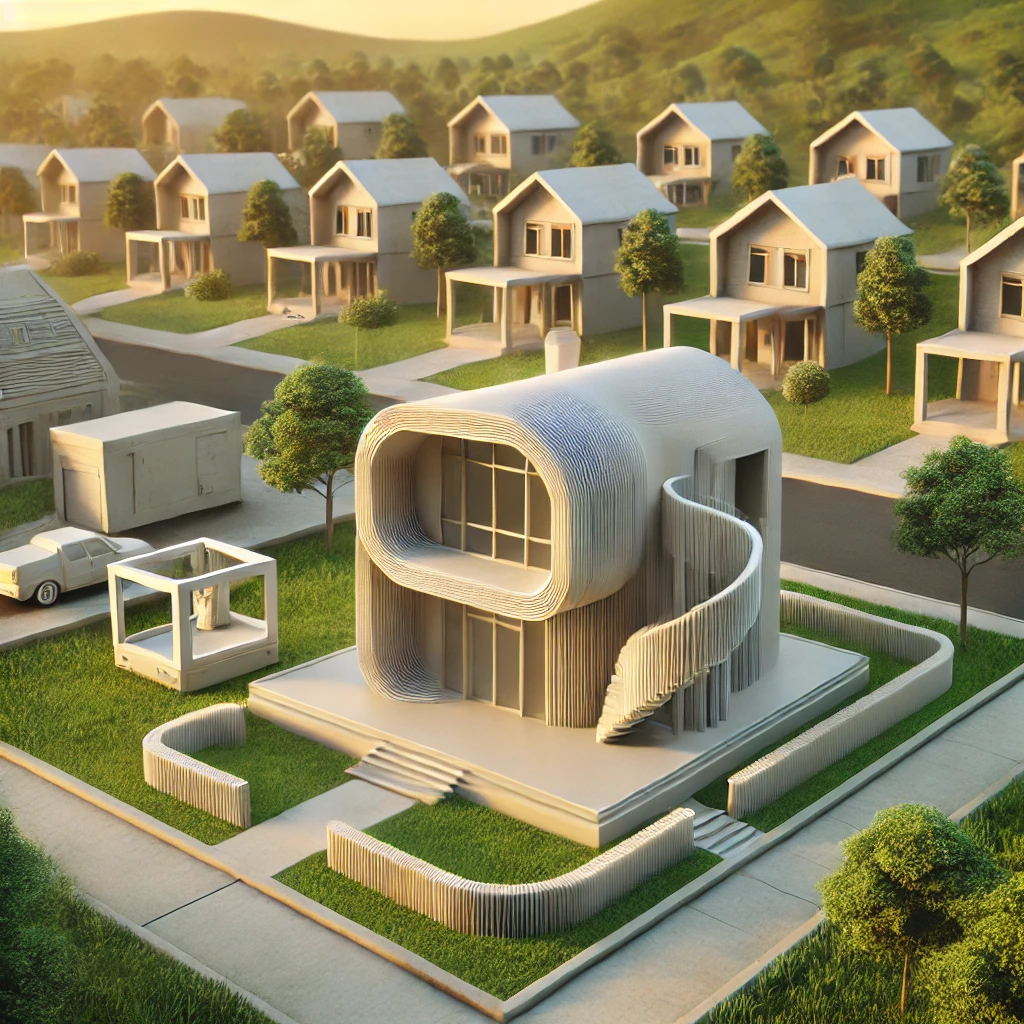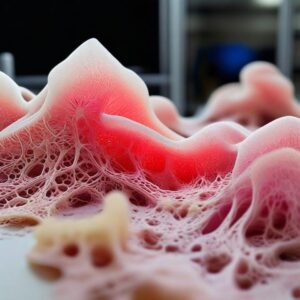The Growing Market of 3D-Printed Homes: What to Expect

The construction industry is undergoing a technological revolution, with 3D printing emerging as one of the most groundbreaking innovations in recent years. Once confined to creating small-scale objects and prototypes, 3D printing technology is now being applied to the construction of full-scale homes, heralding a new era in the housing market. The potential for 3D-printed homes to offer affordable, sustainable, and efficient housing solutions has captured the attention of builders, architects, and governments worldwide. In this article, we explore the growing market of 3D-printed homes, the benefits they offer, recent developments in the field, and what the future holds for this transformative technology.
The Rise of 3D-Printed Homes
3D printing, also known as additive manufacturing, involves creating three-dimensional objects by depositing material layer by layer according to a digital model. In the context of construction, 3D printers can be scaled up to produce entire structures, such as walls and floors, using materials like concrete, plastic, or recycled materials. The concept of 3D-printed homes has evolved rapidly over the past decade, moving from experimental prototypes to fully functional houses that can be inhabited.
The first 3D-printed home was built in 2013 by Dutch architecture firm DUS Architects. Since then, numerous companies and organizations have entered the 3D-printed housing market, each pushing the boundaries of what is possible with this technology. Today, 3D-printed homes are not only a reality but also a growing trend, with projects underway in various parts of the world, from the United States to Africa.
Benefits of 3D-Printed Homes
1. Affordability: One of the most significant advantages of 3D-printed homes is their potential to reduce construction costs. Traditional construction methods are labor-intensive and time-consuming, leading to high costs. In contrast, 3D printing automates much of the construction process, significantly reducing labor costs and construction time. This makes it possible to build homes more affordably, which is particularly beneficial in regions facing housing shortages or where affordable housing is a pressing issue.
2. Speed: 3D-printed homes can be constructed much faster than traditional homes. What might take several months using conventional methods can be completed in a matter of days or weeks with 3D printing. This speed is especially advantageous in emergency situations, such as natural disasters, where there is an urgent need for quick and efficient housing solutions.
3. Sustainability: Sustainability is another key benefit of 3D-printed homes. The precision of 3D printing allows for the efficient use of materials, minimizing waste. Additionally, 3D-printed homes can be constructed using environmentally friendly materials, such as recycled plastics or locally sourced raw materials. Some companies are even experimenting with bioplastics and other sustainable materials, further reducing the environmental impact of construction.
4. Design Flexibility: 3D printing offers unparalleled design flexibility, allowing architects and builders to create complex and customized designs that would be difficult or impossible to achieve with traditional construction methods. Curved walls, intricate patterns, and unique architectural features can be easily integrated into the design of 3D-printed homes, offering homeowners a high degree of personalization.
5. Durability: 3D-printed homes are often more durable and resilient than traditionally built homes. The materials used in 3D printing, such as concrete or composites, can be engineered for strength and longevity. Additionally, the continuous printing process results in fewer joints and seams, reducing potential weak points in the structure.
Recent Developments in 3D-Printed Housing
The 3D-printed housing market has seen significant advancements in recent years, with several high-profile projects making headlines:
ICON’s 3D-Printed Homes: Texas-based construction technology company ICON has been a leader in the 3D-printed housing market. The company has completed multiple 3D-printed homes in the United States, including affordable housing projects in Austin, Texas. In 2020, ICON unveiled the first 3D-printed homes available for purchase in the U.S., marking a major milestone for the industry.
Project Milestone in the Netherlands: In 2021, the Netherlands saw the completion of the first legally habitable 3D-printed home as part of Project Milestone. This initiative, a collaboration between Eindhoven University of Technology and several construction companies, aims to build five 3D-printed homes in Eindhoven, each with increasing levels of complexity. The project has received widespread attention for its innovative approach to sustainable and affordable housing.
Mexico’s 3D-Printed Community: In Tabasco, Mexico, the world’s first 3D-printed community is taking shape, thanks to a partnership between nonprofit organization New Story and construction tech company ICON. The project aims to provide affordable housing for families living in extreme poverty, demonstrating the potential of 3D printing to address global housing challenges.
Dubai’s 3D-Printed Office Building:** Dubai, a city known for its architectural innovation, is home to the world’s first 3D-printed office building. Completed in 2016, the “Office of the Future” was printed in just 17 days, showcasing the speed and efficiency of 3D printing in construction.
The Future of 3D-Printed Homes
As the technology behind 3D printing continues to advance, the future of 3D-printed homes looks promising. Here are some potential developments to watch for:
Wider Adoption: As the benefits of 3D-printed homes become more widely recognized, it is likely that more construction companies, architects, and governments will adopt this technology. This could lead to an increase in 3D-printed housing projects around the world, particularly in regions facing housing shortages or natural disasters.
Advanced Materials: Research into new materials for 3D printing is ongoing, with the potential to further enhance the durability, sustainability, and affordability of 3D-printed homes. Future homes may be built using advanced materials that are stronger, more resilient, and even more eco-friendly than those currently in use.
Smart and Connected Homes: The integration of 3D printing with other technologies, such as the Internet of Things (IoT), could lead to the development of smart and connected homes. These homes could be designed with built-in sensors, energy-efficient systems, and other smart features, providing homeowners with greater control over their living environments.
Urban Planning and Infrastructure:** Beyond individual homes, 3D printing has the potential to revolutionize urban planning and infrastructure. Entire neighborhoods or communities could be 3D-printed, with integrated infrastructure such as roads, utilities, and public spaces. This approach could lead to more efficient and sustainable urban development.
Affordable Housing Solutions: As the cost of 3D printing continues to decrease, it is likely that 3D-printed homes will become an increasingly viable solution for affordable housing. Governments and NGOs may turn to 3D printing as a way to quickly and efficiently provide housing for low-income families and disaster-stricken communities.
The growing market for 3D-printed homes represents a significant shift in the way we think about construction and housing. With its potential to offer affordable, sustainable, and quickly-built homes, 3D printing is poised to address some of the most pressing challenges in the housing industry today. As the technology continues to evolve,




